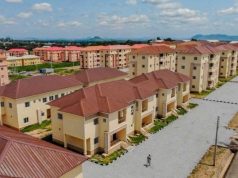From Our Housing Stand (122)
Shelter is recognised as a basic human right, however, due to the high cost of building materials constructing affordable housing is proving to be difficult for developers.
Over 40% of Nigeria’s population lives in urban areas, which include Lagos, Ibadan and Jos.
Factors responsible for this urban population growth include a high fertility rate of about 2.8% and rural-urban migration which directly stimulates the urbanization process. The resultant effects of this trend are the emergence of new growth centres and the increase in the size of existing ones. The urban population has been growing rapidly at an annual rate of 4.2%.
The immediate and extremely visible consequence of urban population growth is the housing shortage crisis.
Despite the efforts made by the government to tackle the issue of housing availability, the cost of building in Nigeria keeps rising. This is as a result of several factors, especially the high cost of building materials.
Majority of Nigerians believe that expensive materials are quality materials. In an effort to keep up with the latest design techniques, expensive materials and other furnishing components are used in constructing homes, which upon completion, are rarely affordable.
Materials which can be produced or manufactured locally are imported at a higher price, either as a result of high taste or because there’s no confidence in some of the locally produced materials, These materials include marble, granite, stainless steel, exotic ceiling and roofing materials, massive columns with ornaments and cornices, bulletproof windows and doors.
Another issue that prevents the use of locally manufactured building materials in the construction of mass low-cost housing is the limited durability of locally produced materials leading to either high maintenance costs or short-lived structures. Mud or wooden houses are prone to attacks by termites, are susceptible to catching fire and rain degradation, and suffer excessive dryness during the harmattan.
The low and middle-income earners are the most affected by the high cost of construction in Nigeria. Due to affordability, they live in densely populated or informal ‘slum’ areas.
The high-income earners, 1% of the population, occupy a small percentage of the housing stock. Therefore, the majority of newly built homes in city centres are left unoccupied.
These are some of my recommended solutions to achieving affordable housing in Nigeria:
The construction of future housing projects should be based on locally manufactured and quality construction materials.
Promote local manufacturing of materials that are of high quality, low cost, energy-efficient and environmentally friendly.
The Federal Government with State Governments should embark on more large scale housing programmes and encourage the use of tested local materials.
Intensive research should be carried out in schools and research institutes on more ways to improve the quality of our local building materials.
There are existing cement factories in places like Calabar, Sokoto and Shagamu, as well as clay factories in Minna, Maraguta and Okigwe. They should be given support to ensure continued quality material production.
Vacant houses in central urban areas can be converted to multi-residential flats, for rent.
The high cost of building has negative implications on the building industry, for example, project abandonment, a drop in building construction and quality materials, and the inability to secure finance for projects. However, an application of the proffered solutions would reduce investment risks for contractors, obtain clear and effective strategies on how to reduce prices of building cost and generally, boost the viability and development of the industry.




